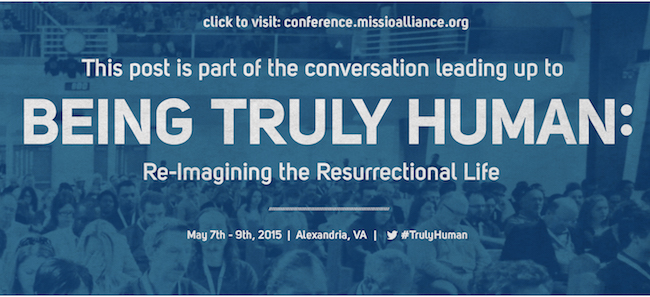When a friend cries “domestic violence” all sorts of reactions are unleashed within our communities. Some of support, most of incredulity, others of condemnation–as in “how dare you accuse my friend.”
The guttural force of our collective reactions is telling of the dehumanizing nature of the charges. To us, “victim” or “perpetrator” are categories that live somewhere else “over there;” they don’t describe wholesome subjects but partial objects; caricatures of human interactions that on the one hand prescribe the perpetrator to be a monster with nothing redeemable about them, and conversely require complete innocence of the victim as a condition to qualify for the privilege of our charity.
So when a friend cries “domestic violence” these social prescriptions have us fall into a whirlpool of cognitive dissonance, “but how… he seems so… what?! well, she’s not a ride in the park either…”
What makes this even more difficult is that once we have been let into the reality of violence affecting our friends, we cannot remain neutral. We must take a position, and we must do it while trying to grab a hold in the whirlpool of our cognitive dissonance.
Within the Church, this cognitive dissonance is heightened because of the inexcusable–but hardly surprising–level of misinformation on dynamics of domestic violence (DV) that most leaders display. In light of this I will provide some useful concepts from the academic literature on Intimate Partner Violence (IPV) that may help readers and bloggers put some language to this murky issue. In addition, it may help some to understand their own responses and the responses of others.
Within the church, the responses to DV can be summarized into two different frameworks that are, to my understanding, irreconcilable. On the one hand, there is the framework of personal accountability. This framework places the burden of moral conduct in each member of the couple. As such, when looking at a couple, they see two equally positioned individuals who are held equally accountable for their actions. Under this framework we find the “she started it” kind of talk and the oh-so-painful victim blaming. As bystanders, many focus on their own personal piety being careful not to sin against a brother by raising potentially damaging concerns against his character. This framework works great in a variety of settings, but domestic violence is not one of them.
The other framework is the one that looks at systems of power and control. Here, the parties involved are held accountable according to their different positionings, that is, their gender, clout, access to finances and other resources. Under this view, the victim must be “helped up” to make up for the lack of power afforded by her lower positioning in comparison to that of her more charismatic, resourceful, partner. Here, the burden of moral conduct lies on the extended community of bystanders, who are called to advocate and protect the little power and credibility the victim has left.
These two positions are very common when it comes to issues of intimate partner violence (IPV). In her book Trauma & Recovery: The Aftermath of Violence–from Domestic Abuse to Political Terror, Judith Herman tells us that “The conflict between the will to deny horrible events and the will to proclaim them out loud is the central dialectic of psychological trauma.”
This conflict not only affects the victim, but it also extends to the rest of us–the bystanders, who must face the moral decision to speak up on her behalf or to remain silent. The problem is that remaining neutral is never an option. To remain silent, it follows, is to side with the perpetrator.
Speaking up, Herman tells us, is costly. Our credibility goes away with that of the victim. Remaining silent, on the other hand, is easy. The perpetrator does not ask us anything but to do nothing. We risk nothing, making the perpetrator’s invitation irresistible for some.
This approach, some may argue, assumes we know who is the victim and who is the perpetrator. Unfortunately, IPV is never clear to bystanders. Usually, it is very difficult for the ones who are not living inside the couple’s home, to establish who is the victim and who is the perpetrator.
Johnson (2002) offers a useful typology to help us name what we witness. He describes three types of couples violence:
First, situational couples violence is the escalation of an argument gone wrong. This is usually a one-time fight that got out of hand and it is likely there are no significant power differentials between the parties.
Second, intimate terrorism, on the other hand, is the systematic use of both violent and non-violent tactics (such as beatings and humiliation), of a male against his female partner in order to establish coercive control. This is what we usually talk about when we discuss DV.
Third, violent resistance, where the victim engages in violent behavior, is the victim’s attempt to cope with coercive control… she fights back.
The hermeneutical key to DV, is to recognize the presence of a pattern of coercive control involving physical, sexual, and emotional abuse by a spouse or sexual partner (See Pence, 1993).
Here, it is important to note that the perpetrator, in his attempt to gain and maintain control over his family members, must be able to defend the secrecy of what happens at home. This explains the fact that many perpetrators are the most charming and wonderful people you’ll ever meet–outside their home, that is.
Which brings us back to the issue that often gets in the way of helping families affected by violence–our own prescriptions of “victim” and “perpetrator.”
We often think of perpetrators as horrible monsters, forgetting that “perpetrators are people too.” And, as people, they are complex human beings with great things about them. Usually it’s these great aspects of perpetrators that the victims first saw and fell in love with. Think about this: 1 in every 4 couples in the US are affected by IPV. Of 4 couples that you know, it is statistically possible that one of them will be experiencing this kind of situation. It is very common–more than we like to think. So the next time a friend asks for your help to be safe from her partner, it should not surprise you–it is statistically possible.
So my question is this: How do we keep the “human” in perpetrator? How do we recognize both victims and perpetrators as partakers in the divine nature, the imago Dei, and help them heal?
This is crucial for many reasons. Recognizing both victim and perpetrators in all their humanity makes us a more inviting community for those who need to speak up and need to seek help.
Expecting that up to 30% of your congregation may be affected by IPV, may help you speak of it more clearly from the pulpit in more effective ways.
Conventional wisdom invites pastors and colleagues to condemn the perpetrator by way of shaming, which can often backfire against the victim at home. Conversely, research shows that perpetrators, like all damaged people, need nurturing avenues to seek help. The trick is to love on the perpetrator while keeping his victims safe, believe them and love them well.
For reasons of space I cannot spell here the best practices to deal with IPV in our communities. But, I can refer you to great resources. Among them, Dr. Nancy Murphy at Northwest Family Life, has a myriad of ongoing online classes and courses for the Christian Community on issues of IPV.
It is my hope that the more we learn together, the more we can heal together.






Missio Alliance Comment Policy
The Missio Alliance Writing Collectives exist as a ministry of writing to resource theological practitioners for mission. From our Leading Voices to our regular Writing Team and those invited to publish with us as Community Voices, we are creating a space for thoughtful engagement of critical issues and questions facing the North American Church in God’s mission. This sort of thoughtful engagement is something that we seek to engender not only in our publishing, but in conversations that unfold as a result in the comment section of our articles.
Unfortunately, because of the relational distance introduced by online communication, “thoughtful engagement” and “comment sections” seldom go hand in hand. At the same time, censorship of comments by those who disagree with points made by authors, whose anger or limited perspective taints their words, or who simply feel the need to express their own opinion on a topic without any meaningful engagement with the article or comment in question can mask an important window into the true state of Christian discourse. As such, Missio Alliance sets forth the following suggestions for those who wish to engage in conversation around our writing:
1. Seek to understand the author’s intent.
If you disagree with something the an author said, consider framing your response as, “I hear you as saying _________. Am I understanding you correctly? If so, here’s why I disagree. _____________.
2. Seek to make your own voice heard.
We deeply desire and value the voice and perspective of our readers. However you may react to an article we publish or a fellow commenter, we encourage you to set forth that reaction is the most constructive way possible. Use your voice and perspective to move conversation forward rather than shut it down.
3. Share your story.
One of our favorite tenants is that “an enemy is someone whose story we haven’t heard.” Very often disagreements and rants are the result of people talking past rather than to one another. Everyone’s perspective is intimately bound up with their own stories – their contexts and experiences. We encourage you to couch your comments in whatever aspect of your own story might help others understand where you are coming from.
In view of those suggestions for shaping conversation on our site and in an effort to curate a hospitable space of open conversation, Missio Alliance may delete comments and/or ban users who show no regard for constructive engagement, especially those whose comments are easily construed as trolling, threatening, or abusive.